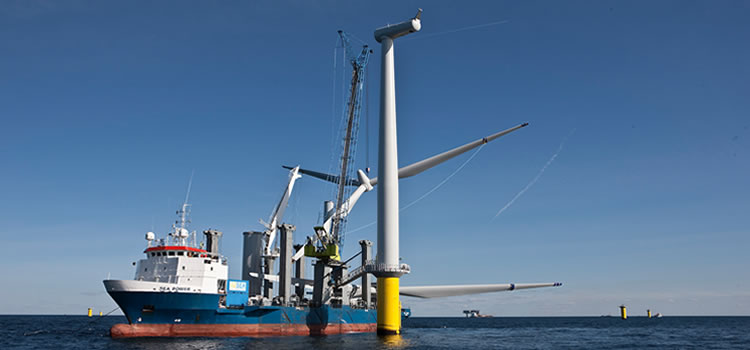Amerika wil ook tenders voor offshore wind

14 december 2016 – De Nederlandse en Deense voorbeelden van offshore wind tenders werken aanstekelijk. In de Verenigde Staten wil men nu dezelfde aanpak gaan volgen.
Uit een bericht van GTM Research
‘(…) For European offshore wind, a price drop [of another 25 percent by 2030] is coming sooner rather than later. It’s a longer road in the U.S., since the American offshore wind market is nearly nonexistent. But one state bidder in an upcoming offshore wind auction is trying to make the process more like Europe’s in order to establish a viable market and drive costs down.
The New York State Energy Research & Development Agency (NYSERDA) is one of a dozen bidders in the upcoming offshore wind auction for a site 12 miles off of Long Island. NYSERDA is betting that it can perform the functions that governments often assume in Europe to make burgeoning U.S. offshore wind projects cheaper than they’d otherwise be, even if it won’t be able to deliver projects as cheaply as those Europe has seen of late.
The European offshore wind market is robust, with more than 11 gigawatts spinning in the chilly waters off of northern Europe. The average offshore European wind farm is about 350 megawatts.
Vattenfall recently won a contract for 350 megawatts of offshore wind off the coast of Denmark at a startling $63 per megawatt-hour. Until recently, prices were still over $100 per megawatt-hour for offshore projects. The Vattenfall bid was not just a one-off, however. Earlier in the year, Dong won an auction for a Dutch offshore wind farm at $77 per megawatt-hour.
By comparison, the first offshore wind farm in the U.S. off of Block Island is 30 megawatts and is just coming on-line after suffering an early setback due to a misplaced drill bit. It is reportedly selling electricity for about $0.25 per kilowatt-hour, or about $250 per megawatt-hour.
Bronnen
GTM, 13 december 2016: Can NYSERDA Make Offshore Wind Projects in the US More Like Europe’s?
Foto: DONG Energy



